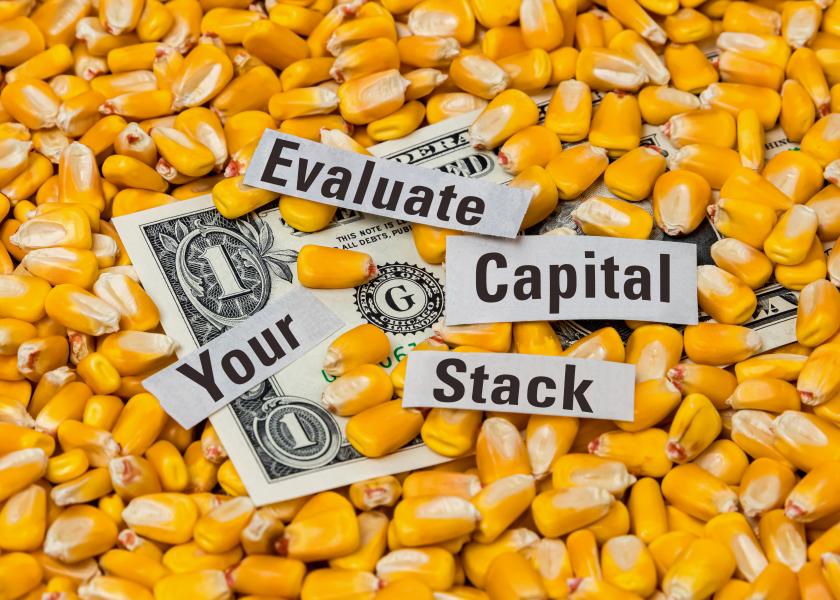Evaluate Your Farm's Capital Stack

Is your operation poised for financial stability?
The cheapest option isn’t always the least expensive. That’s especially true when it comes to your farm’s capital costs.
With higher profit potential versus recent years, now is a smart time to analyze your capital structure and options, says Peter Martin, finance and growth consultant with K·Coe Isom.
“Capital can come from many sources: debt, equity, supplier financing, even friends and family,” he says. “If you’re happy with where your operation is, cheap capital may be good. But if you’re looking to grow, diversify or try something new, paying a little more for capital may bring worthwhile advantages.”
Rate Sensitivity Analysis
Evaluate your capital structure from both tangible and intangible perspectives, Martin says. How can you make yours more flexible, cheaper and more tailored to your operation’s goals?
From a hard-cost perspective, take a deep dive into your loan portfolio, suggests Ashley Arrington, founder of ag consulting firm Agri Authority. Consider your loan portfolio, she says, and ask these questions:
- How would my debt load be affected by an increase in rates?
- Is something being aggressively amortized that could be toned down for year or so?
- Could some debts be combined and re-amortized?
- How are my payments timed? Are they timed to coincide with cash flow?
“Your banker should be able to help answer these questions,” Arrington says. “Just don’t want to wait until the last minute to run the numbers to see how different interest rate levels will impact your operation.”
Beyond the hard costs, consider capital-cost intangibles, Martin says.
“For example, there may be a strong advantage with capital flexibility,” he says. “Is your lender willing to work with you to help you get where you’re trying to go? Will they give you the freedom to buy what, when and where you want? Is working with that lender a yearly grind or more aligned as a partner for the future? All that’s worth something, even if your cost may be a little higher.”
Be Poised for Good Times
Many farmers applied and were given funds through the Paycheck Protection Program (PPP). That combined with higher commodity prices mean farmers are securing fewer loans through traditional lending, says Joe Caffee, president and CEO of the First State Bank of Middlebury, Ind.
“Banks and financial institutions are getting more and more competitive for the very best credits because we're all sitting on a pile of cash,” he says.
As a result, lending institutions may be willing to provide larger portions of your operating needs or adjust their credit requirements. Now may be the time to replenish or increase your working capital.
For example, maybe you need $1 million to run your farm. You borrow 50%, or $500,000. You still need the other $500,000, so you use money you’ve set aside from profits. But what if you had instead borrowed 80% of the $1 million?
“You still would have your own untouched money that could be used for another opportunity,” Martin says. “Some farmers operate with very high levels of debt, others with none. There is no perfect capital structure for all farms, only what works best for your business.”
Calculate Your Cost of Capital
Consider the following factors to understand the true cost of your business capital, says Peter Martin, finance and growth consultant with K·Coe Isom.
Interest rate. It’s not only important to know the main cost of borrowing but the fees that go with it. These can include origination fees or a fee for an audited financial statement. Have you factored in those costs?
Supplier finance. When you borrow from a supplier, the true cost can often reach into double-digit percentages. Why? Because the terms often mean you can’t take advantage of cash discounts on the supplier’s product or service. Borrowing from a supplier may also preclude you from buying that same product or service for a lower price from another business.
Equity opportunity. People often fixate on the visible cost of debt. But remember the equity that’s factored into the cost of your capital. You might get a lower interest rate based on the higher equity you bring to the table. But could you make better use of your equity without committing it to your lender?







